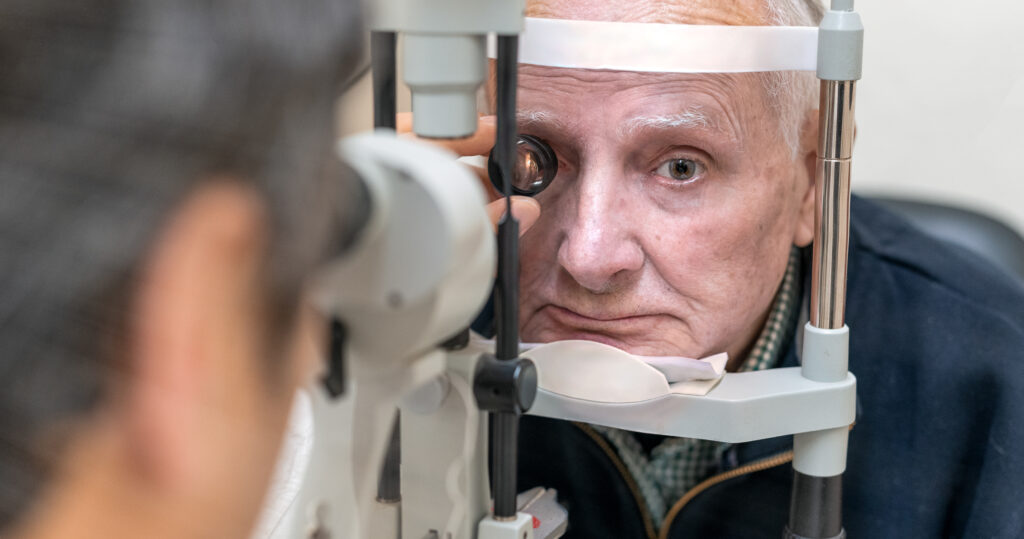An eye-saving treatment for melanoma in the eye

Date: July 25, 2023
Categories: Health Focused, Cancer
You may be stunned to learn melanoma can develop in the eye since more than 9 of 10 melanomas start in the skin. According to the American Cancer Society, an estimated 3,490 new eye cancer cases will be diagnosed. Eye cancer can develop at any age, but the risk for most types increases as people age. Uveal melanoma is a rare cancer but is the most common type of eye cancer in adults.
The causes of uveal melanoma are unknown. No risk factors have been definitively associated with this type of cancer. Still, experts have found that uveal melanoma occurs mainly in patients who are Caucasian with lighter-colored eyes.
According to Mayo Clinic, most don’t exhibit symptoms. Instead, the tumor is often discovered during a routine eye exam. When symptoms do occur, signs and symptoms of eye melanoma can include:
- A sensation of flashes or specks in your vision (floaters)
- A growing dark spot on the iris
- A change in the shape of the dark circle (pupil) at the center of your eye
- Poor or blurry vision in one eye
- Loss of peripheral vision
Make an appointment with your provider for any signs or symptoms that concern you. A sudden change in your vision signals an emergency, so please seek immediate care.
Treatments at Augusta Health:
Thankfully patients affected by this rare form of melanoma have a treatment option that offers a chance of saving the eye, and possibly vision. A specialized form of radiation therapy is delivered to the tumor by placing a radioactive plaque on the eye, directly over the cancer in a procedure called brachytherapy. This treatment requires close collaboration between ocular oncology, radiation oncology, medical physicist, and operating room staff. Ocular oncology and radiation oncology devise and approve a treatment plan that strives to destroy cancer in the eye while minimizing the injury to healthy parts of the eye.
The plaque, about the size and thickness of a quarter, is constructed out of 18k gold alloy on one side to protect the surrounding healthy tissue. On the side facing the eye are tiny radioactive “seeds” that emit radiation to kill the tumor cells. The plaque is surgically attached to the outside surface of the eye with temporary stitches. The plaque remains in place for a week or so. Because no two tumors are alike, these radioactive plaques are customized to each patient’s tumor.
This month, EyeOne ophthalmologist Eugene Shildkrot, MD, Director of Ocular Oncology Services, performed the first eye plaque surgeries at Augusta Health. “This was a historic day for our community, says Scott Crabtree, Vice President of Augusta Health Professional Services. “We can now provide this highly specialized eye cancer procedure here at Augusta Health for the patients in our community and surrounding regions.”
Dr. Shildkrot joined EyeOne and the Augusta Health Medical Staff this year. He brings this unique service to Augusta Health as the only health system in Virginia to offer eye plaque surgery to cancer patients. “This is an excellent collaboration between ophthalmology and radiation oncology to treat ocular cancers,” says John Girard, Administrative Director of Augusta Health Center for Cancer and Blood Disorders. “Sarah Scarboro, Ph.D., DABR, Augusta Health Medical Physicist, partnered with Dr. Shildkrot and has been key in developing the radiation oncology portion of this service.”
Augusta Health and EyeOne are committed to ocular health and cancer care. If you would like more information, please visit https://www.augustahealth.com/service/center-for-cancer-and-blood-disorders/.

